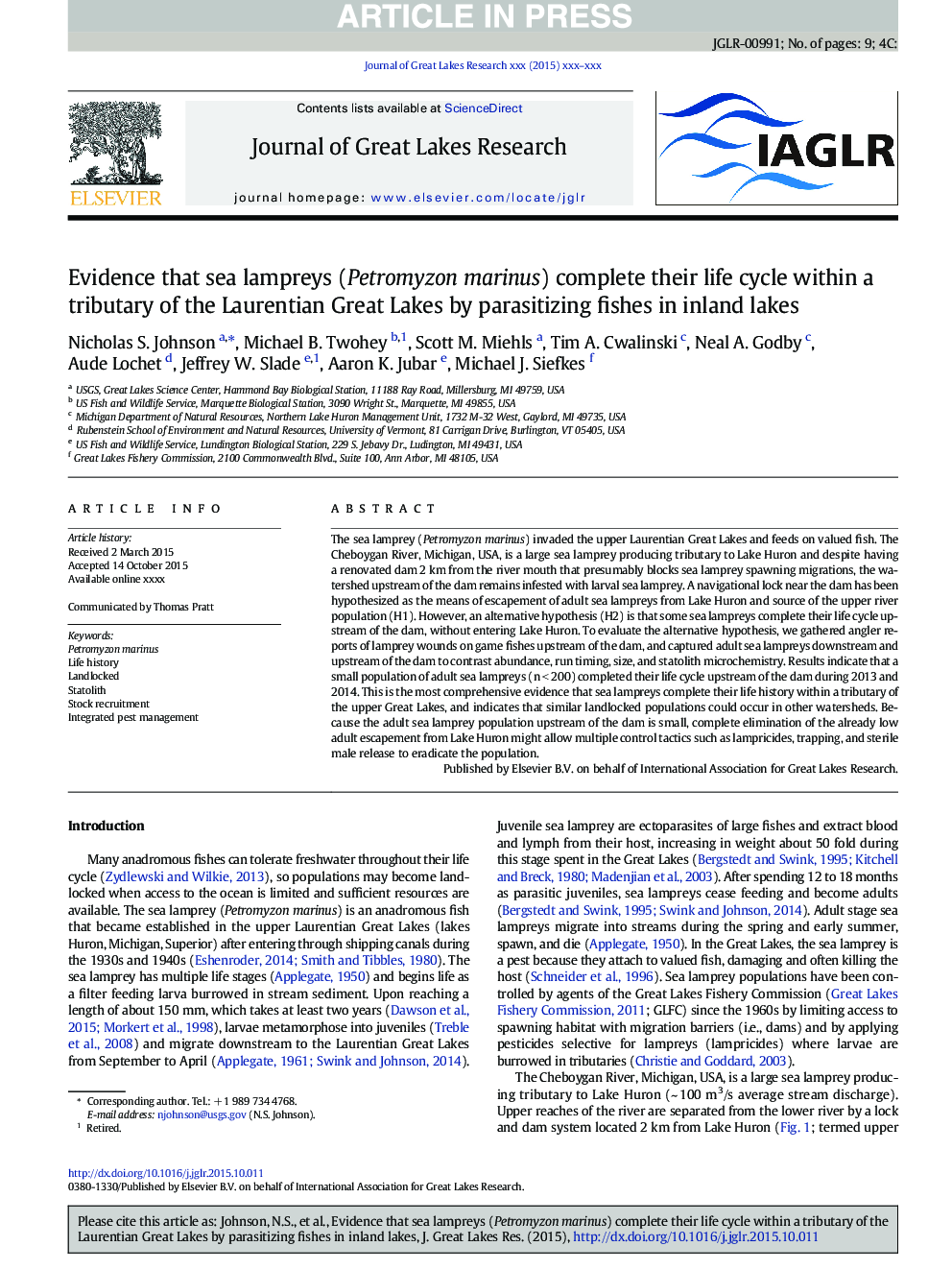| Article ID | Journal | Published Year | Pages | File Type |
|---|---|---|---|---|
| 6304626 | Journal of Great Lakes Research | 2016 | 9 Pages |
Abstract
The sea lamprey (Petromyzon marinus) invaded the upper Laurentian Great Lakes and feeds on valued fish. The Cheboygan River, Michigan, USA, is a large sea lamprey producing tributary to Lake Huron and despite having a renovated dam 2 km from the river mouth that presumably blocks sea lamprey spawning migrations, the watershed upstream of the dam remains infested with larval sea lamprey. A navigational lock near the dam has been hypothesized as the means of escapement of adult sea lampreys from Lake Huron and source of the upper river population (H1). However, an alternative hypothesis (H2) is that some sea lampreys complete their life cycle upstream of the dam, without entering Lake Huron. To evaluate the alternative hypothesis, we gathered angler reports of lamprey wounds on game fishes upstream of the dam, and captured adult sea lampreys downstream and upstream of the dam to contrast abundance, run timing, size, and statolith microchemistry. Results indicate that a small population of adult sea lampreys (n < 200) completed their life cycle upstream of the dam during 2013 and 2014. This is the most comprehensive evidence that sea lampreys complete their life history within a tributary of the upper Great Lakes, and indicates that similar landlocked populations could occur in other watersheds. Because the adult sea lamprey population upstream of the dam is small, complete elimination of the already low adult escapement from Lake Huron might allow multiple control tactics such as lampricides, trapping, and sterile male release to eradicate the population.
Related Topics
Physical Sciences and Engineering
Earth and Planetary Sciences
Earth and Planetary Sciences (General)
Authors
Nicholas S. Johnson, Michael B. Twohey, Scott M. Miehls, Tim A. Cwalinski, Neal A. Godby, Aude Lochet, Jeffrey W. Slade, Aaron K. Jubar, Michael J. Siefkes,
